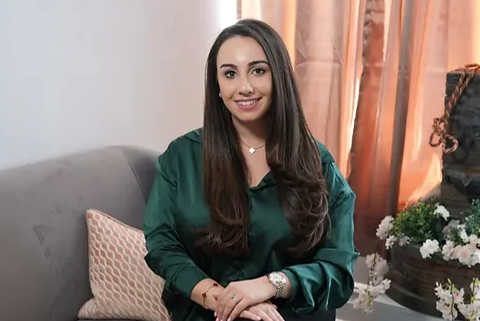Transforming Lives with Myofunctional Therapy
Touro University School of Health Sciences Alum Tammy Chaimov Solves Speech Issues with a Holistic Approach

Tammy Chaimov, a Touro School of Health Sciences (SHS) Speech-Language Pathology '19 alum, started her speech-language career at a charter school. After working with the pediatric population for several years to hone her skills, this alumna-turned-entrepreneur made the decision to open a private practice, so she could make a larger impact on the lives of clients. Today, at Long Island Speech & Myo, she works closely with children and adults using myofunctional therapy, a holistic approach that can correct the improper function of the tongue and facial muscles to eliminate a variety of speech-related issues.
- Can you talk about your journey after graduating from Touro School of Health Sciences to establishing a successful private practice in speech language pathology?
I worked at Hyde Leadership Charter School, a charter school in the underserved East New York neighborhood for around three years, then worked at a few high schools where I provided an array of speech services. While every case is different, I kept noticing the close correlation between children with the most severe speech, language and cognitive difficulties also typically suffering from underdeveloped facial structures, poor eating habits, behavioral and sleep difficulties, and reduced attentiveness and energy. If left untreated over time, these challenges often lead to jaw pain and migraines in adulthood. During the Covid pandemic, I stumbled upon myofunctional therapy and wanted to learn more. I eventually decided to open my own practice on my native Long Island in partnership with my sister-in-law, who is a holistic dentist, where I focus on providing these types of therapeutic techniques.
- What is myofunctional therapy and what prompted you to specialize in this specific area of speech language pathology?
Myofunctional therapy is a holistic approach that corrects the improper function of the tongue and facial muscles to ensure that these very important parts of the face are always moving in the correct position. While it’s not that well- known, this therapy is a niche area in which speech language Practitioners (SLPs) and dental hygienists can specialize. I’m Orofacial Myofunctional Trained, which means that I can help children and adults alleviate and improve language issues such as Tongue Thrusting, eating, breathing, and even talking more efficiently.
- Is there a memorable or challenging patient that you've worked with that highlights the impact of myofunctional therapy?
I learn something new from each client, but one that stands out is a child who was in speech therapy for nearly three years working on pronouncing her “r” sound with little to no progress. Once we started doing the myofunctional protocol after evaluating important factors like breathing, chewing, and swallowing, she was able to make significant progress in less than ten sessions. People go through horrible pain due to compromised movement of the jaw joint and the surrounding muscles, and don’t realize how small tweaks to their regular routine, such as changing the way they move their jaw while eating or even something as simple as changing the water bottle they’re using can help them to reduce their pain.
- What key skills did you learn at Touro that you now leverage on-the-job?
There are so many things that I learned while a Touro student that I use daily at work! Dr. Blaustein taught me the importance of differential diagnosis and seeing the patient as a whole; Dr. Blitman helped me to find my courage needed to open a private practice and understand the importance of remaining continuously abreast of new innovations in the profession; and Dr. Weill highlighted the importance of specializing and excelling in a particular area of the speech field.
Additionally, the diverse courses and clinical experiences Touro offered shaped me into the successful clinician that I am today. I enjoyed the small class sizes and high level of attention that I received from my professors. While completing my clinical requirements, being able to regularly meet with my advisor to discuss what was going well and the challenges I was facing was incredibly helpful. Many of the topics discussed during my time as a Touro student, including the ins and outs surrounding cleft palate and early intervention techniques, enabled me to seamlessly navigate scenarios that I deal with regularly.
- In your experience, how has the field of speech language pathology, and more specifically, myofunctional therapy, evolved over the years? Where do you see yourself headed in the next 5 years?
When I first started my career, I didn’t even know myofunctional therapy existed and was just using the skills I was taught without really thinking outside of the box. However, now that I’ve been practicing myofunctional techniques, it’s been easy to fill in the gaps that have existed with different clients in the past as I’m looking at obvious speech issues, but also analyzing key patterns between speech and other factors like eating.
In the next few years, I see myself growing in the field and networking with other providers, bringing more awareness to how myofunctional therapy can benefit kids and adults alike.
- What advice would you give to current students or aspiring speech language pathologists?
Think outside of the box as you will almost always see better results when looking at each person from a unique lens while using your vast knowledge base. Never limit yourself to what you currently know as you actively need to continue to educate yourself, it’s a lifelong process. Never stop believing in yourself even when times are tough, and regularly connect with colleagues in the field as their feedback and advice is invaluable.

